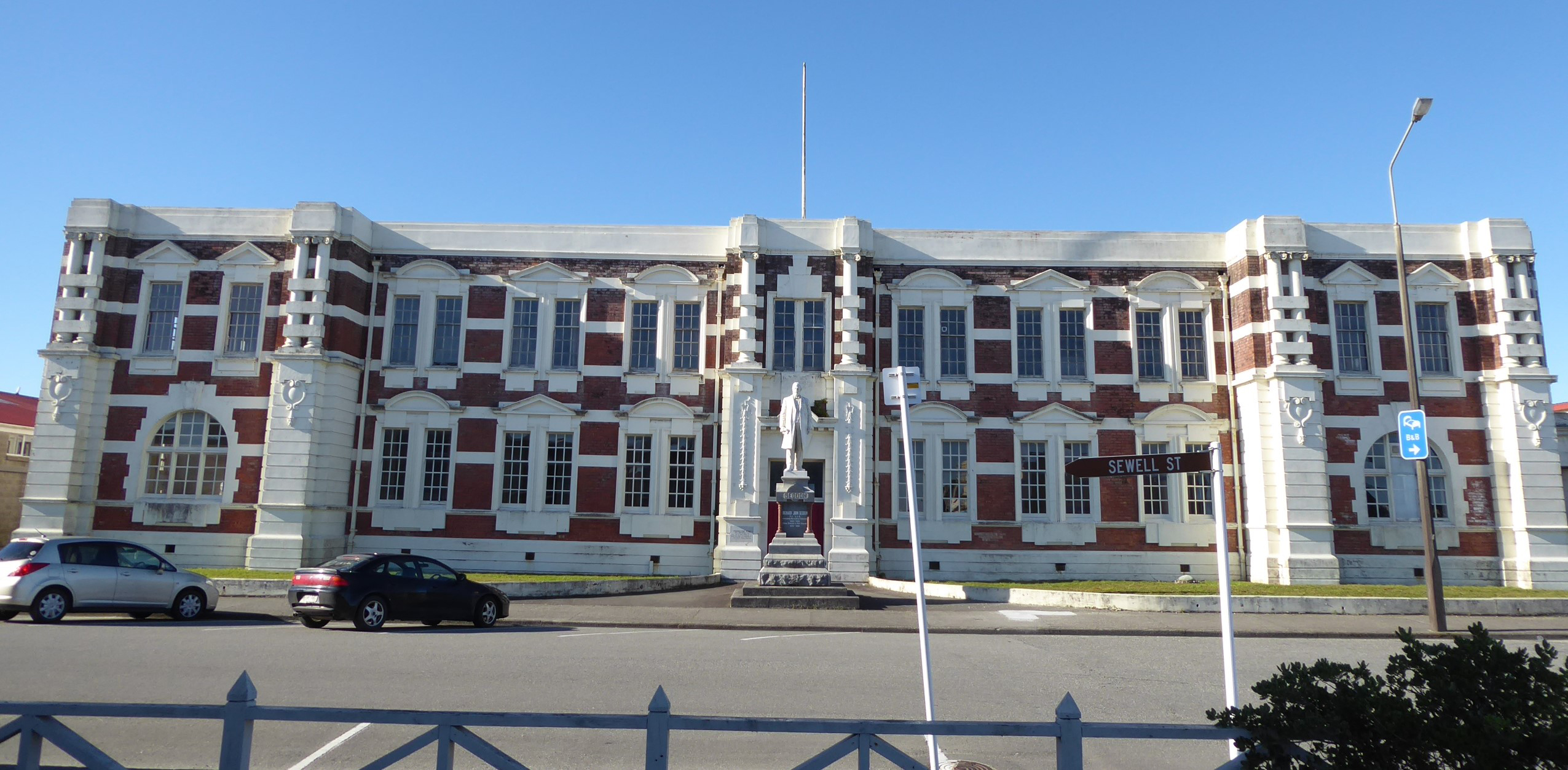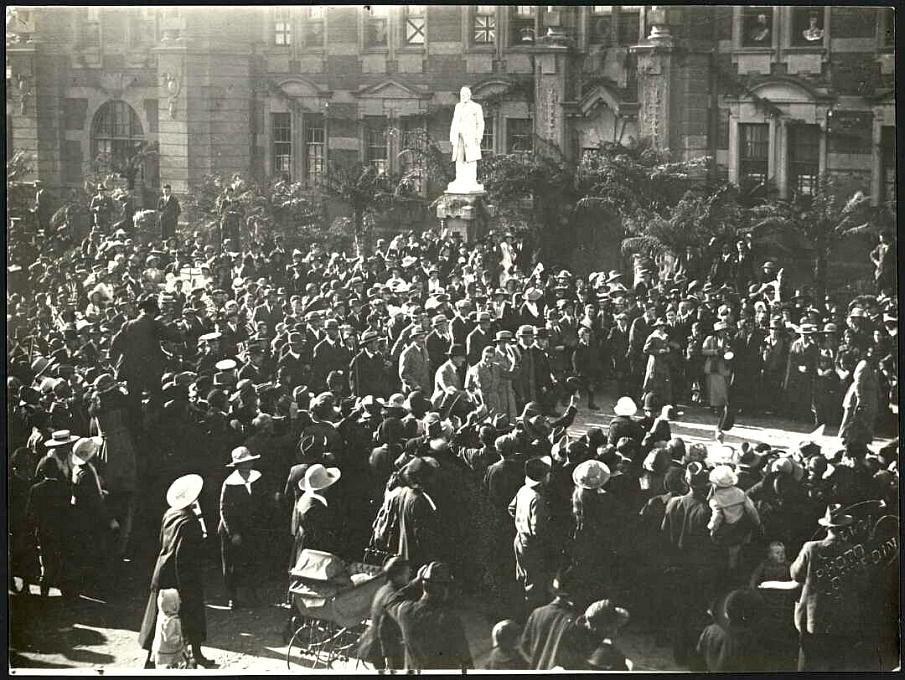The Government Building/Courthouse at Hokitika was one of a number of government offices built throughout New Zealand at the beginning of the twentieth century designed by Government Architect, John Campbell (1857-1942). It was built in two stages primarily as a response to the local Lands and Survey Department's plea for larger and better accommodation. The Liberal Party, who came to power in 1891, introduced a series of social and economic reforms, which led to New Zealand being known as the 'social laboratory' of the world. This led to a growth in state bureaucracy and a corresponding increase in the number of government buildings needed to house this bureaucracy. Although the Liberals' building programme started slowly the Minister of Public Works from 1891-1896, Richard John Seddon (1845-1906 - later Premier of New Zealand), and his successor William Hall-Jones (1851-1936), succeeded in turning the Public Works Department into 'the country's largest construction agency'. Campbell designed the building to house a number of other government departments as well as Lands and Survey. The building was also designed to contain a new courtroom, as complaints were rife about the existing courthouse's dirtiness. Contract plans were ready by January 1908 and tenders were called for the first half of the building the following month. While the tenders were being considered the Minister of Public Works, Hall-Jones, suggested that the building be set back 20 feet (approx 6m) from the street to accommodate a statue of Seddon, who had died while Premier of New Zealand two years earlier. Campbell reluctantly agreed to set the building back but only so shrubs could be planted in front of it as he didn't believe 20 feet would provide sufficient space for a statue. The statue of Seddon was unveiled in front of the Government Buildings on 25 May 1910. (The statue is also registered by the New Zealand Historic Places Pouhere Taonga.) As with Campbell's earlier Napier Departmental Office, the Hokitika Government Buildings was erected in two stages. Construction of first half was completed by 8 June 1909. This consisted of the main entrance and the wing to the left. It stood incomplete for some time as Campbell was too busy to draw up plans for the second stage of building. However, by November 1911, plans for the second half were drawn up, a tender accepted in January 1912, and the building completed by end of 1913. The second stage of the building contained the new courthouse. Originally it had been planned to house the Supreme Court above the Magistrates' Court on the ground floor. However, [the plans were changed as the Court was used for both], with a boardroom being put in above the Magistrates' Court. Campbell was noted for establishing Imperial Baroque as the government style of architecture in New Zealand. In doing so he was part of a wider attempt by British and colonial architects to give architectural expression to Britain's imperial power. Architects looked back to the English architecture of the seventeenth and early eighteenth centuries, which they saw as a particularly English style suitable to express the glory of the British Empire and this message was spread throughout the Empire by expatriate architects. Campbell's interpretation of Imperial Baroque developed over many years. His design for the Hokitika Government Buildings was more restrained than some of his earlier works and based on his design for the Wellington Magistrate's Court (1901-1903), a building which architectural historian Peter Richardson argues 'established the architectural vocabulary used by the Architectural Branch...for the next twenty years'. (Richardson, 1997: 302) While the 'centre and ends' composition and the internal floor plan are similar to that of the earlier Napier Departmental Building and the banding of brick and plaster, the open-bed pediments, oversized keystones and cartouches remain, the overall effect is more muted and the Flemish-inspired gables of the late nineteenth century have been replaced by giant aedicules. Although more restrained in terms of Campbell's oeuvre, the Hokitika Government Buildings still presents a rich three-dimensional surface to the street. The building continued to house various government departments until the 1990s, although the courtroom was closed during the 1970s as part of a national programme of restructuring by the Department of Justice. It was sold into private ownership in 1994 and the current owners have begun restoration work. The Hokitika Government Buildings/Courthouse are one of the most impressive extant examples of Campbell's large provincial government office buildings and a fine example of his later, more restrained work. Reflecting New Zealand's ties to the British Empire, the Imperial Baroque style favoured by Campbell also provided New Zealanders with government buildings which reflected the growth and prosperity of New Zealand. The size of the building, one of the largest in Hokitika, reflects the contemporary importance of the town as the administrative centre for the West Coast, an economically and politically important region at the time. In conjunction with the statue of Seddon situated in front of the main entrance, the building also stands as a memorial to Seddon and the public buildings programme he initiated. It housed the local representatives of central government for over ninety years and remains a prominent feature of the Hokitika townscape today.





Location
List Entry Information
Overview
Detailed List Entry
Status
Listed
List Entry Status
Historic Place Category 1
Access
Private/No Public Access
List Number
5011
Date Entered
6th June 1990
Date of Effect
6th June 1990
City/District Council
Westland District
Region
West Coast Region
Extent of List Entry
Extent includes part of the land described as Lot 1 DP 3239 (RT WS8B/652), Westland Land District and the building known as Government Building (Former) thereon. See extent map tabled at the Rārangi Kōrero Committee meeting on 30 April 2019.
Legal description
Lot 1 DP 3239 (RT WS8B/652), Westland Land District
Stay up to date with Heritage this month
